Trinity bricks are red,
Mountain laurel smells sweet,
When it comes to Valentines,
You can’t be beat!
People began sending cards to their Valentines in the eighteenth century; these were usually handmade and hand-delivered. Mass-produced Valentine greetings became common with the development of new printing technology in the Victorian era, and when postcards came into widespread usage around 1900 they became a popular format for these holiday greetings.
Coates Library Special Collections & Archives has a collection of thousands of vintage postcards collected by Margaret “Peg” Ziperman (1915-2017), a San Antonio librarian and philanthropist. Most of the postcards in this collection focus on travel and tourism sites, but a handful are greetings related to various holidays–including Valentine’s Day.
These postcards were all addressed to a Miss Mary Anna Crary of Beaumont, Texas, between 1909 and 1915. Most of them are unsigned, which was common for Valentine greetings at the time–most were sent anonymously! Who was this Miss Crary, who attracted admirers from Omaha, San Antonio, Houston, and Beaumont?
I conducted a Google search, and discovered that Mary Anna Crary Anderson was born in 1908, and died in 2009 at the age of 101. That means that she was a young girl, between the ages of 1 and 7, when she received these cards. Possibly they were sent by family members who lived far away, but wanted to share their love with her on this day. They were clearly important to Mrs. Anderson, who kept the collection together over the years.
The imagery on these cards is very typical of the Victorian and Edwardian eras: cupids and children frequently appeared on Valentines, and “secret” meanings were given to flowers in artwork–red roses symbolized romantic love, while pink roses were associated with familial love and happiness.
So how did these postcards end up in the Coates Library collection? Mrs. Ziperman bought many of her postcards at estate sales and flea markets; perhaps that is where she found them and added to her collection. Mrs. Ziperman and Mrs. Anderson were both librarians; perhaps they met at a regional library conference and became friends, and Mrs. Anderson gifted them to the collector. One can only guess.
One thing about which I do not have to guess is that Mrs. Anderson would be delighted to know that these postcards ended up in an archives. During her lifetime, she was a member of the Texas Gulf Historical Society, and she donated historical materials to The History Center in Diboll, Texas, and the Tyrrell Historical Library in Beaumont.
Learn more about the history of Valentine cards at HistoryExtra. Browse digitized selections from the collection on the Coates Library Digital Collections page.

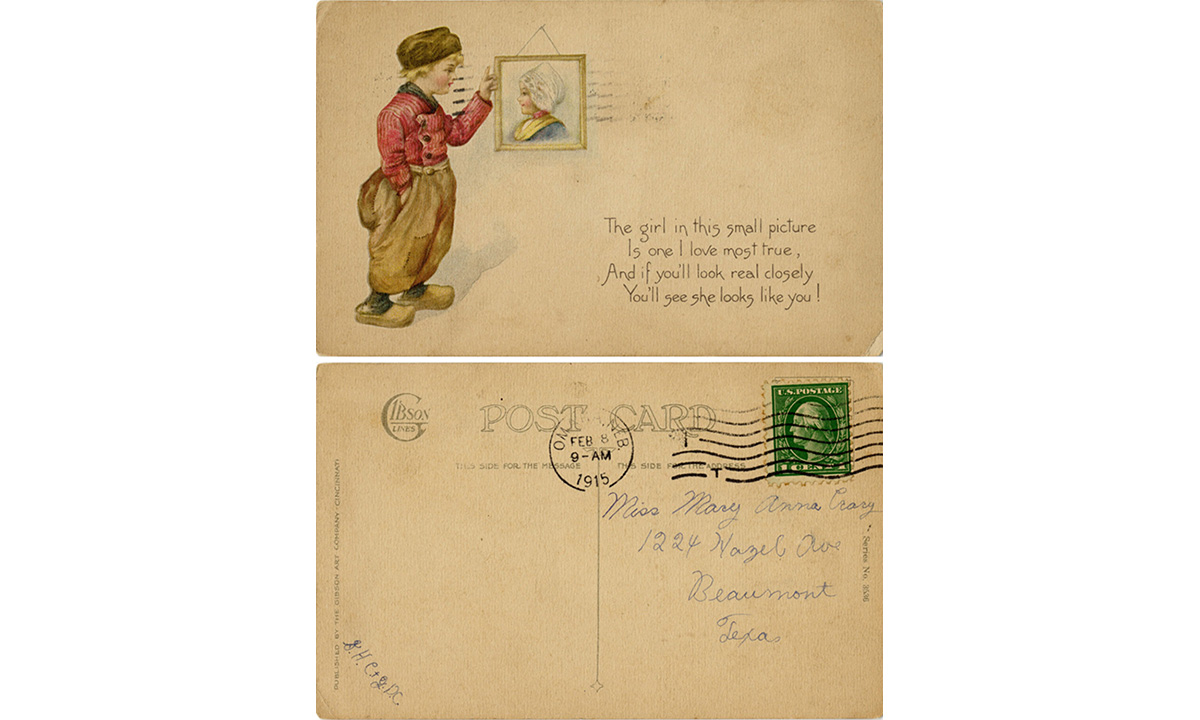
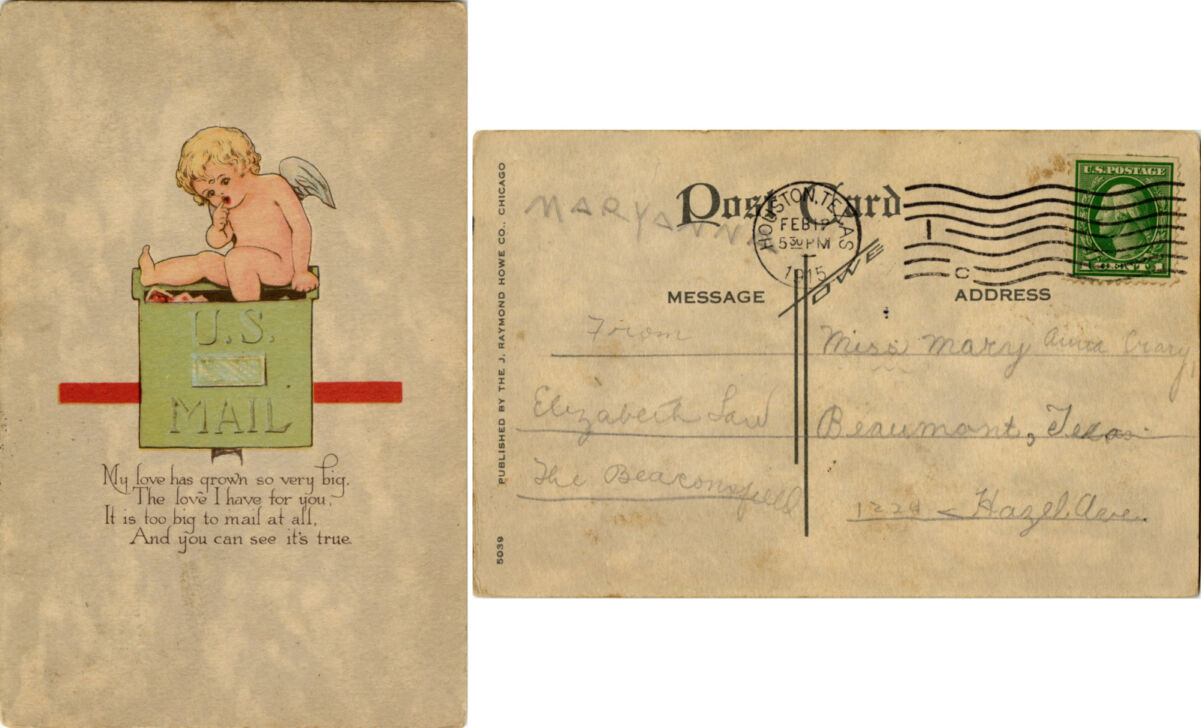
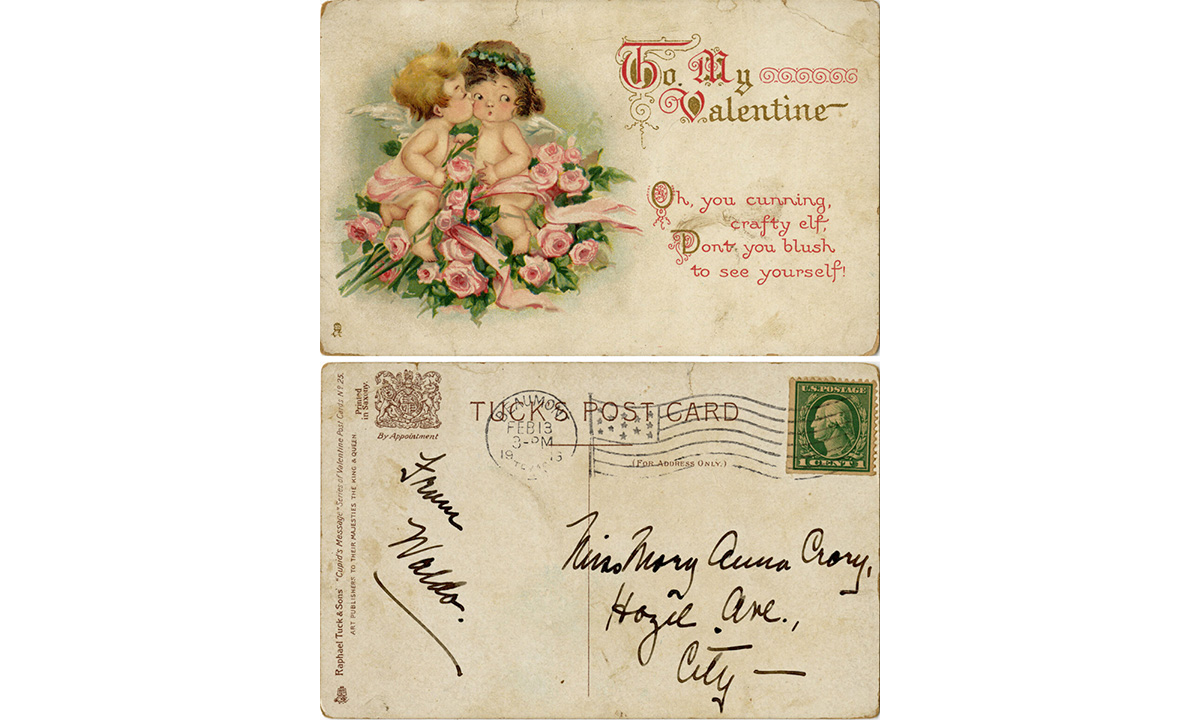
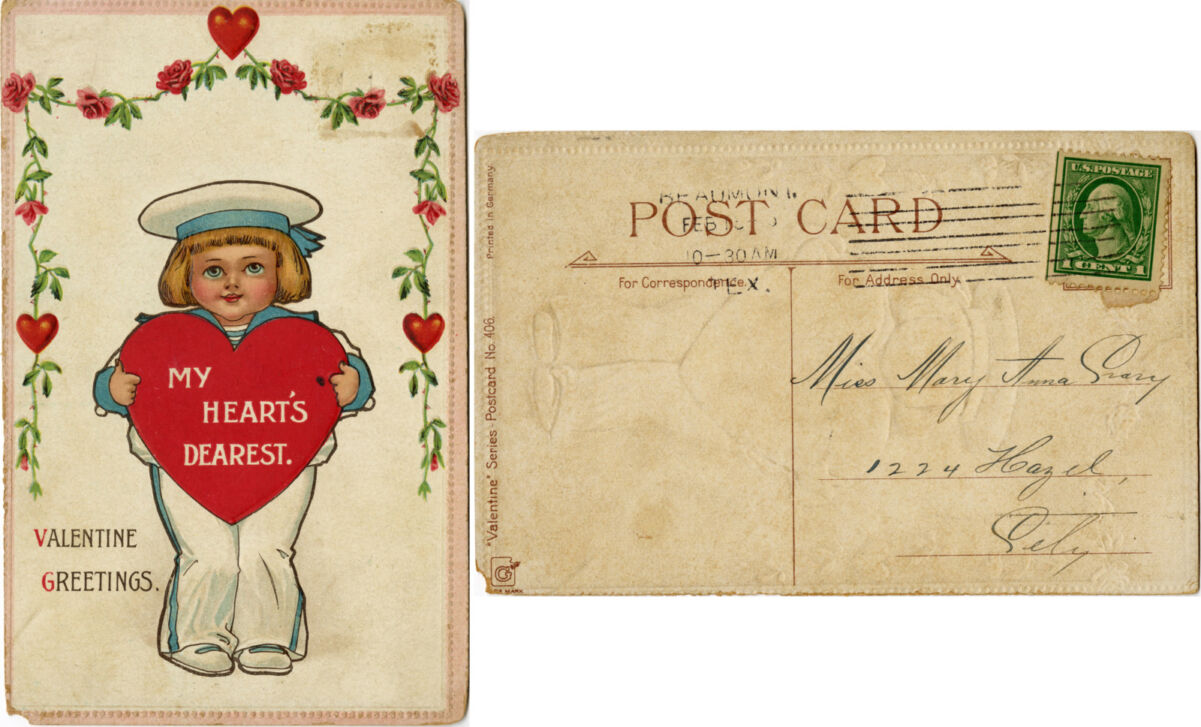
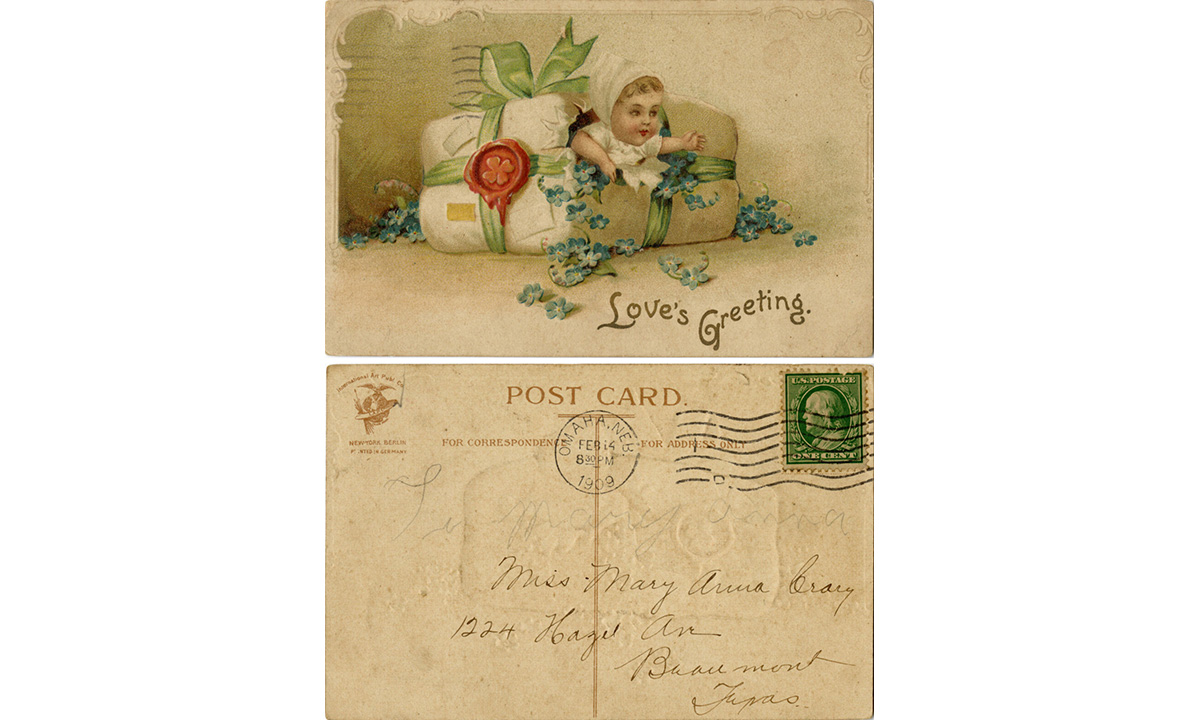
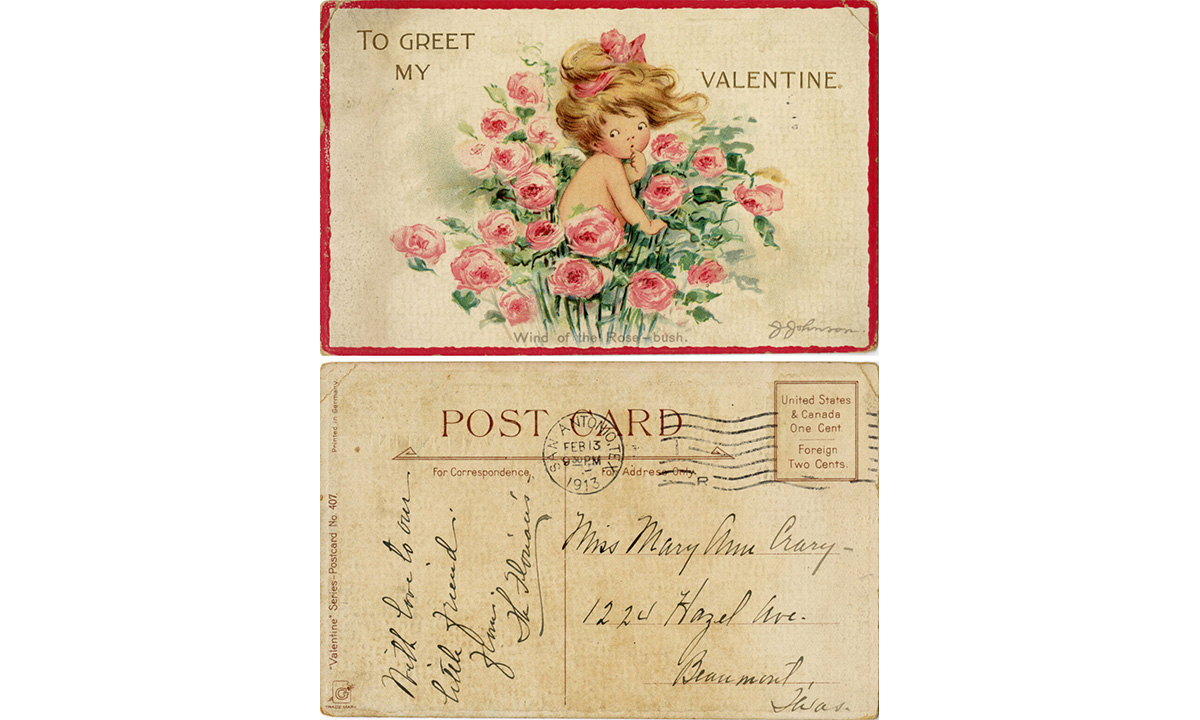
Recent Comments